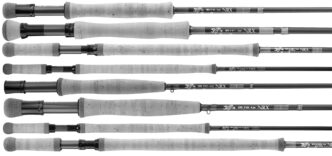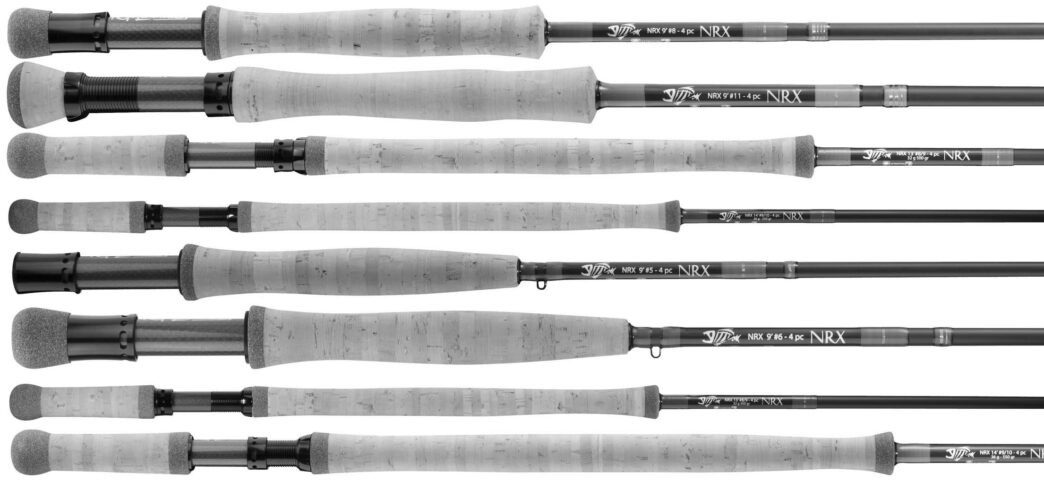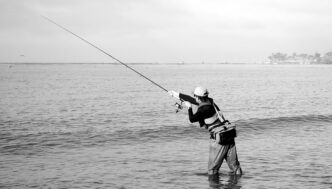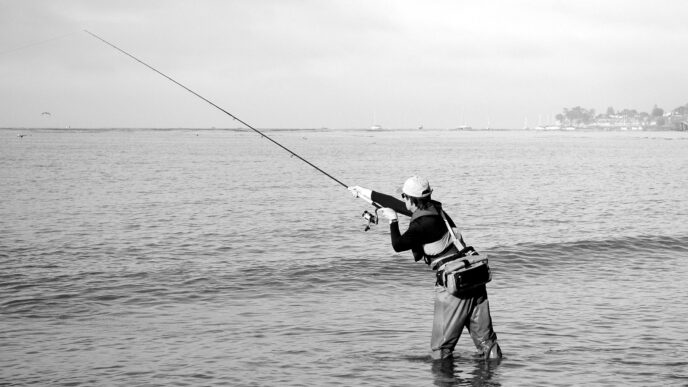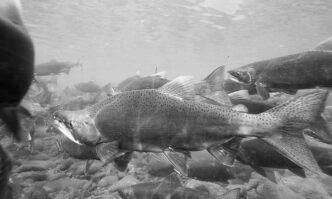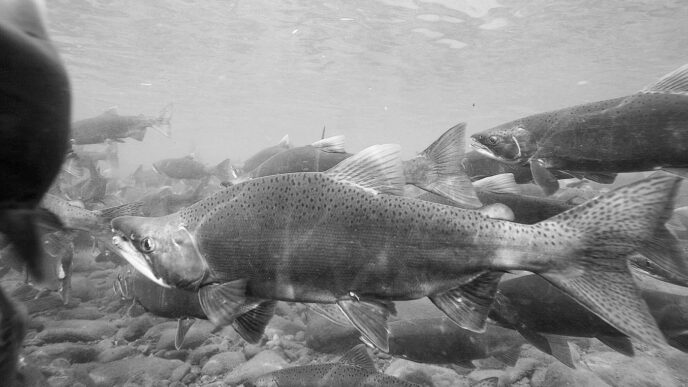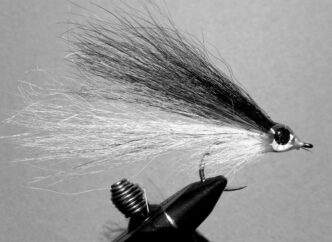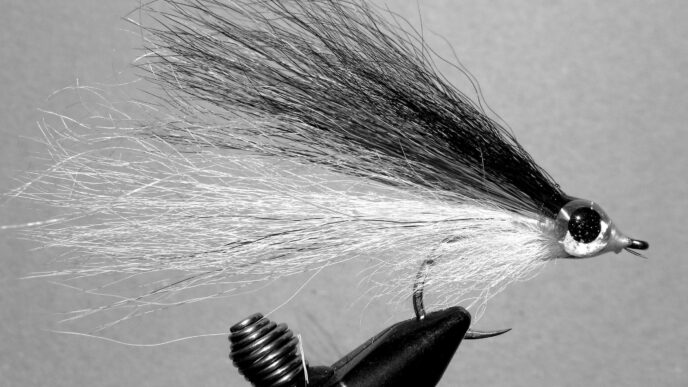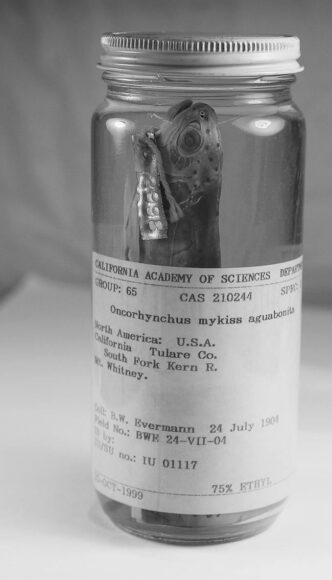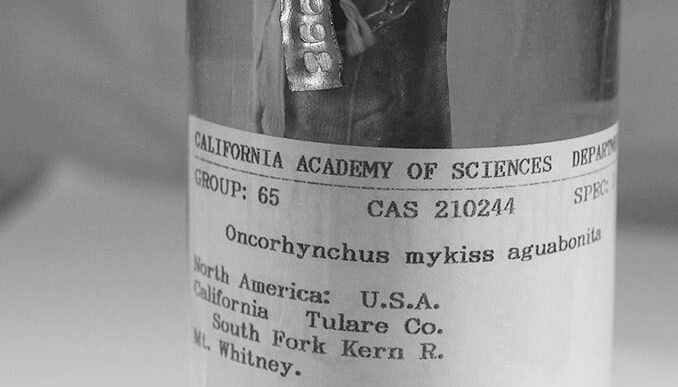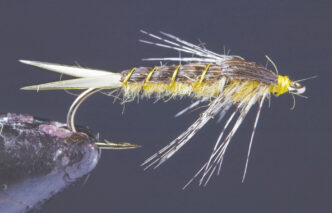The International Fly Tackle Dealer show in Denver this past September was widely expected to be a bust, the result of a lousy economy, a challenging market for fly tackle, and industry-wide displeasure at poor show promotion and uncertain benefits over the past handful of years. I’m delighted to report that despite fewer exhibitors attending, the show was anything but a funeral, or even a wake. Cautious optimism and a renewed sense of purpose seemed to be rearing their pretty little heads.
That noted, what I saw at the show suggests that this isn’t going to be a year of earthshaking new products. There were, of course, lots of new rods, reels, lines, waders, boots, soft goods, and accessories, but my sense is that most manufacturers — with a potential notable exception or two — are perfecting or tweaking existing designs, rather than coming up with something new. Let’s start with fly rods and a couple of those notable exceptions.
Late this past summer, Hardy, G. Loomis, and St. Croix announced that they’d be introducing new rods that are significantly lighter, stronger, and more durable than previous offerings. Central to all three manufacturers’ offerings is a new epoxy resin system, developed by 3M, that’s impregnated with ultramicroscopic nano-silica spheres. 3M data shows that the introduction of nano-silica spheres not only binds the resin better to the carbon fibers, but also significantly improves a blank’s compressive strength. The result, it’s argued, is that a rod can be made stronger and more durable without adding weight — or made lighter without reducing strength and durability. The resin system can also be used in conjunction with a variety of carbon fibers, so blank manufacturers can still fiddle with modulus and directional layups as they see fit. Not surprisingly, the new resin system is being sold at a premium, which certainly won’t drive product prices down.
Hardy’s new offerings, which got a lot of attention in Denver, are the new Zenith and Proaxis rods, made with a graphite and nano-silica-resin prepreg material that Hardy calls Sintrix. Hardy boasts that Sintrix rods are 60 percent stronger than rods made from conventional resin systems and up to 30 percent lighter. Proaxis freshwater rods are all four-piece models in line weights from 4 to 8 and lengths from 8 to 10 feet, and range in price from $595 to $745. Zenith saltwater rods, developed with the assistance of tarpon-angling hero Andy Mill, are offered in 8-foot 10-inch one-piece models for line weights from 8 to 12 and 9-foot four-piece models for line weights 6 to 12. Prices run from $655 to $745. Mill has won more tarpon tournaments than anyone, so rods that reflect his expertise and preferences should definitely be worth a look. Both series of rods are light, stiff, and fast, with a high-tech look featuring metallic gray blanks with darker gray wraps, titanium REC Recoil guides, and contemporary-looking reel seats. I didn’t get a chance to cast one, but friends who did were impressed. Whether all this is enough to move Hardy rods into a more prominent place in the hearts of American anglers and retailers remains to be seen.
G. Loomis didn’t attend the Denver show, but a few of their new NRX nanosilica resin fly rods managed to make their way into inquisitive hands there. The NRX series consists of 13 four-piece 9-foot and 10-foot single-handed models for line weights 3 through 12 and three double-handed models of 13, 14, and 15 feet in length. Rods feature matte gray and black blanks with opaque, light blue and gray wraps, REC Recoil guides, grips with composite cork at high-stress areas, and slick new reel seats with no exposed threads.
G. Loomis, like Hardy, insists that their new material is unique, incorporating specially chosen stiffer carbon fiber materials as well as nano-silica resin, with the result that blanks are 15 percent lighter and 20 percent stronger and more impact-resistant than the company’s GLX models. Those enhancements come with a price, of course, and NRX fly rods run from $700 to $1,170. St. Croix is the third player with nano-silica-resin rods for 2011. Like G. Loomis, they sat out the show, but their PR machine has been busy letting the industry know what they’ve been up to. Unlike Hardy and G. Loomis, St. Croix has not made any claims about revolutionary new layups, and with refreshing modesty, it has simply said that it was among the first to test 3M’s new nano-silica-resin system, and it thinks capitalizing on its benefits makes sense. St. Croix is making a running change to that resin system (in combination with existing SC-V and SC-VI graphite) in their top-end Legend Elite fly-rod series and will increase prices $5 and $10 over those of last year. They’re also introducing two new streamer rods that use
the same graphite material and 3M nanosilica resin as the Legend Elite rods. Designed in association with big-fly guru Kelly Galloup, the new Bank Robbers, as the two 9-foot four-piece 6-weight and 7-weight models are called, will sell for $400 and feature silver blanks, gray wraps, and a high-techy-looking reel seat in which the rod blank is visible through two side cutouts.
Of course, the obvious question to ask is, if three major rod companies are jumping on the nano-silica bandwagon, why aren’t the other rod companies doing the same? I asked the folks at Scott, Sage, and Orvis this question and got variations on the same answer: “It’s interesting, we tried it, but we couldn’t see any appreciable improvements over what we’re doing now.” Sage, for example, says they’re happy with current G5 technology, which uses sophisticated computer modeling to select and distribute materials for minimal weight and maximum performance. Scott’s Jim Bartschi likewise said the resin is interesting, but added that 3M test data showed only increases in compressive strength, not impact resistance, and since Scott rods rarely have failed on compression, the new resin system didn’t yet make sense. Orvis’s Tom Rosenbauer told me that nano-silica impregnation didn’t work well with Orvis’ proprietary and already very tough thermoplastic resins — a different critter than the epoxy used in the 3M system — and at this stage of the game offered Orvis no increased benefits.
How this all plays out in the coming years is anybody’s guess. Marketing is one thing, demonstrated advantage in the field is another. My sense is that a resin layup that simply allows rod makers to save weight isn’t particularly significant; rods are almost floating out of our hands already. However, a resin that improves the durability of a rod, that lets it do more lifting and better withstand angling abuse, benefits both angler and manufacturer. You can bet everyone’s paying attention and is looking at any new developments very closely. If the new resin system results in fewer rods being sent back for replacement, we’ll likely see more manufacturers adopting it.
Ok, what about the other new rods? There are quite a few, and I think there are a couple of interesting trends. One is that there’s a new emphasis by some important rod makers on presentation, and a second is that quite a few manufacturers have put real effort into developing quality, attractive rods in the $300-to-$500 price range.
Scott and Cortland both have looked back to earlier days with some pretty neat light-action fiberglass trout rods. Scott’s F2 models echo, rather than mimic, the glass rods of the company’s early San Francisco period. F2s are built on sanded yellow internal-ferruled S-glass blanks, have nicely finished brown wraps with red accents, and use cork slide-band or cork spacer uplocking reel seats. I’d call the actions progressive, but on the medium-slow side. I cast the three-piece 6-foot 6-inch rod for a 3-weight line and the four-piece 8-foot 2-inch rod for a 5-weight line. Both rods were very pleasant and accurate in close, and the 5-weight could easily handle about as long a line as most trout fishing with dries or small nymphs demands. There’s also a two-piece 6-foot 3-weight, and three-piece models at 7 feet and 7 feet 7 inches for 3-weight and 4-weight lines, respectively. Take your pick at $595.
Cortland introduced a new version of their discontinued Diamondglass fiberglass rods. That rod series, from the late 1990s, built in Diamondback’s now-closed Vermont plant, has attracted a strong following among fans of glass rods over the past couple of years. Some models, such as the 8-foot 6-inch three-piece 4-weight were selling used for upwards of $400 on the Internet, and rod builders were actively seeking out the remaining unbuilt blanks. Diamondback’s Glass Series for 2011 is built on S-glass blanks rolled in Korea, then shipped to the United States to be finished. The new version’s glossy midnight blue blanks, with dark blue wraps, nickel-plated wood-insert uplocking reel seat, and an inscribed, rather than decaled label, cast very nicely, and, to my eyes at least, are more attractive than the old black Diamondglass versions. Six models are available, from 6 feet to 8 feet 6 inches for 2-weight, 3-weight, and 4weight lines, including a very nice 8-foot 6-inch three-piece 4-weight. The $299 price makes adding one to your rod rack reasonably painless.
Orvis’s presentation effort for 2011 is a reworking of their Superfine series, which the graying among us will remember from the 1970s and 1980s. The new Superfine Touch rods have been completely reengineered with new mandrels and modern materials. Like the old models, they feature unsanded natural graphite blanks and Orvis’s classic Superfine grip, where the front cork, tapering into the blank, is overwrapped with thread. Cosmetics aside (and I think they look great), the notable thing here is that Superfine Touch rod actions are designed to present a fly from 10 to 40 feet . . . at distances, in other words, where most trout are caught. Fifteen Superfine Touch models are offered at $475 to $485, from a 6-foot 1-weight to a 9-foot 6-weight. The three-piece 7-1/2foot 3-weight and four-piece 8-foot 4weight rods I cast were both very sweet, handling little more than a leader length of line or 35-foot casts with accurate, controllable loops. Small-stream anglers who prefer graphite have cause to rejoice.
The same can be said for Sage’s new TXL-F series of ultralight graphite rods, which the company bills as “a dramatically improved version of our much-loved, ultralight TXL.” Ten revamped models at 6 feet 10 inches and 7 feet 10 inches for line weights 000 to 4, with new microferrules, short “snub-nosed” Wells grips, and lightweight wood-insert uplocking reel seats, are billed as being 33 percent lighter than their predecessors. The 6-foot 10-inch 3weight I cast made me itch to be back on the little brook trout streams I fished in July. These rods are $625, but who’s counting? While top-end, relatively expensive rods still top the drool list for many of us, well-made, solid performers at lower prices are becoming more important to both rod companies and anglers. Winston is a good case in point. The company introduced four new rod series this year, three of which will retail for under $500. Most expensive is the new GVX, an allgraphite series of four-piece rods built in Twin Bridges on the same tapers as their Boron series rods and with the usual outstanding Winston cosmetics. The GVX price — for now at least — is a relatively modest $495 for nine models ranging from a 7-foot 6-inch 3-weight to a 9-foot 8-weight. Winston’s other two inexpensive models, the VSL at $300 and Passport at $200, replace the poorly received Ascent and Vapor series of the past few years. Both new series are built offshore. Blank finish, cork, and fittings are, not surprisingly, of lesser quality than higher-priced Winstons, but they both look nice, represent good value, and perform more than acceptably. Lest you think Winston is going after buyers only at the lower price points, they also introduced Boron IIIx, a composite graphite/boron fast-action series. Not quite as aggressively fast as the Boron II-MX line, Boron IIIx is offered in lengths from 8 to 10 feet in line weights from 3 to 10 at prices ranging from $755 to $822. Winston, by the way, rocked the dealer world when, two days after the Denver show ended, they announced that Cabela’s would be handling the complete Winston line.
Sage’s offering in the modestly priced high-performance range is the new four-piece VXP series at $485 to $525. Sage bills the VXP series as combining the versatility of the discontinued VT2 with the performance of the XP (and if you feel a bit addled by all the changing alphanumerics, you’re not alone.) These are handsome, moss green rods with bronze-gold reel-seat hardware and Sage’s usual wrap scheme and attention to detail. The 9-foot 6-weight that I cast was a solid, stable casting tool that I’d fish happily any day of the week. I wondered for a second about the full Wells grip, short fighting butt, and metal reel seat until I rechecked the label and saw that it was a 691-4 — a saltwater variant of the freshwater VXP 690-4 that has a reverse half Wells grip and wood-insert uplocking reel seat. VXPs are available in models from 7 feet 9 inches to 10 feet 10 inches for line weights 3 through 10. Nice work, all of them.
Orvis, in addition to the Superfine Touch models mentioned above, came up with another rod series that’s both attractively priced and performance oriented. The just-introduced Access series, built with a new epoxy resin system that has added plasticizers for increased strength, includes 15 freshwater and 13 saltwater models and is priced between $350 and $375. These are very handsome rods with root beer–colored blanks, sunburst gold wraps, and root beer–colored woven graphite reel seat inserts. The 9-foot 6weight Access I cast at the Denver show was very light in the hand, quick, responsive, and a solid caster. My guess is that the series will do very well for Orvis in 2011 and beyond.
Four other interesting and modestly priced rod lines made their debut in Denver. Ross’s RX series, at $299, are fast, progressive-action four-piece rods with a deep amber finish and a techy-looking carbon-fiber-insert reel seat. I could find nothing to complain about in the 9-foot 6-weight, which, by the way, is offered in both freshwater and saltwater configurations. At $299 for seven freshwater configurations and $319 for three saltwater models, these rods are going to win fans. Ross offers the same blanks in a “women’s” Diamond version, with burgundy finish and a smaller grip. The Diamond version features fake diamonds spaced around the winding check, though why anyone of either sex would want that is beyond me. Of course, I say this with the understanding that I’m the rare man who actually knows what women want.

(Ross, by the way, was just purchased by Scientific Anglers/3M. Whether this means that some overlapping product lines from each brand will disappear or whether each brand will continue on its own path remains to be seen.)
TFO introduced the BVK series, another fast-action rod series designed with the input of Flip Pallot and Bernard Victor “Lefty” Kreh. Whatever the provenance, BVK rods are extremely light in weight, with translucent olive green blanks, REC Recoil guides, and an uplocking reel seat with braided green graphite insert. There are nine BVK models, all four-piece, from an 8-foot 3-weight to a 9-foot 10-weight. Rods for line weights 3 through 7 are $224.95; heavier models are $249.95. I cast a 9-foot 8-weight prototype in July, and it was something of a cannon, not to mention a bargain.
Tim Rajeff ’s Echo rods have undergone a revamp, discontinuing Echo 2 and replacing it with — ta-da! — Echo 3. That shift, which involves more sophisticated blank materials and components and a single tip, rather than the Echo 2’s two tips, also represents a move up from the just under-$300 price range to the mid-high-$300 range and to a more attractive rod. Freshwater Echo 3s ($349.95) are a green metal–pearl gloss color with a burl wood insert reel seat and a reverse half Wells grip. Saltwater versions ($379.95) are a blue metal–pearl gloss color with a black all-metal seat and a Wells grip. Both series use a new kind of cork grip that Rajeff told me is a high-density cork sourced in Korea. It’s harder than standard cork, just a bit darker in color, and the dense grain provides a bit more frictional contact with your hand. It has a feel somewhere between cork and the new composite rings being used on many rods and is decent looking and pleasant to the touch. Once again, I cast a 9-foot 6-weight and was very impressed. Echo rods have flown under the radar for years, but I’ve never cast one I didn’t like.
Redington’s new Pursuit series, with gold-colored blanks and nice-looking hardware was another surprise. The 9-foot 5-weight I cast was distressingly good, comparable in my mind to rods costing lots more money. Pursuits are available as both rods and outfits in the standard 7-foot-to-10-foot, 3-weight-to-9-weight ranges. Two-piece rods are a ridiculously affordable at $99.95; four-piece rods are $119.95. Add $60 for the outfit, and you get the rod, a Redington Pursuit reel prespooled with a Rio Mainstream fly line, a 9-foot leader, and a nylon rod/reel case. A definite thumbs up.
There was a handful of specialty rods with roots in Midwest fly fishing that should be of interest to California fly fishers. Scott’s Pike and Musky Special is a 9-foot 10-weight four-piece model built on the S4s blank, but with a four-inch fighting butt that lets anglers make figure-eight moves at boatside. It ought to be a fine all-around salmon/saltwater rod for anglers who like to support the rod with their forearm while playing large fish.
Finally, Echo, working with angler and shop owner Pat Ehlers of Milwaukee, Wisconsin, introduced a series they call the Pat Ehlers Echo Edge 84 — five 8foot 4-inch four-piece models for 6weight to 10-weight lines: from bluegills to muskies, in other words. I cast an 8weight that I liked a lot. It has a classy blue blank, is quick and stable, and its length should make it easy to use in boats. I can see it working well in a number of West Coast saltwater situations, as well as for the Midwest bass, small-stream steelhead, and pike fishing for which it was designed. It’s $249 wherever toys are sold.
Next issue, we’ll take a look at new fly reels and fly lines.



